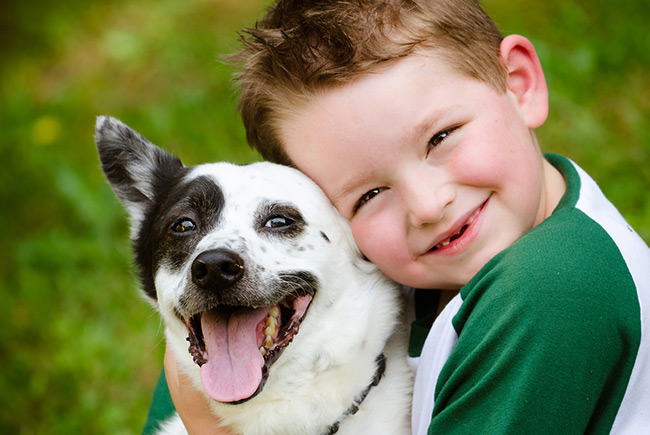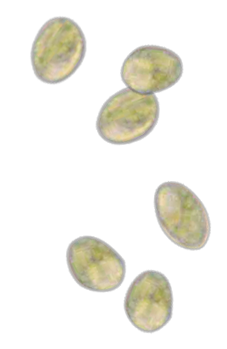
AUTOMATED MICROSCOPIC IMAGING
IMPROVING ANIMAL HEALTH AROUND THE WORLD
Historically, gastrointestinal parasitism in animals has been diagnosed primarily in a veterinary hospital often using inferior microscopes, poor optics, and questionable image quality to visualize parasitic ova on a slide. The procedure was and often is still performed with minimal technical training often prone to errors, misidentification, and lack of recognition. Now, there is Artificial Intelligence interpreting high-quality images providing veterinarians and pet owners with answers and results in only minutes. All available in the veterinary hospital.
SCROLL DOWN
SCIENTIFICALLY SUPERIOR
The Parascan™ microscope developed by QMIRA™ uses finely tuned Artificial Intelligence to detect and diagnose almost invisible intestinal parasites in dogs and cats.
With the Parascan™ technology, veterinary hospitals can reduce the possibility of technical errors, improve parasite identification, and improve the efficiency and reliability of the veterinary technical staff with the convenience of quick results while the patient is still in the exam room.
EASY TO IMPLEMENT & USE
SAMPLE PREP
Parascan™ uses the same “gold standard” Zinc Sulfate centrifugation sample preparation protocol utilized by veterinary reference labs and university parasitology labs.
FOCUS
A sample is inserted into the Parascan™ machine and the Artificial Intelligence uses a high-powered microscope to zoom in on potential problems.
SCAN
No need for advanced training in microscopy and parasitology. During the microscope scan of the Parascan™ slide, thousands of pictures are taken for the Artificial Intelligence to discern parasitic ova from debris and contaminants in the sample.
ANALYZE
The sample is analyzed for all the common gastrointestinal parasites in dogs and cats. The technology and Artificial Intelligence measures multiple size, shape, and integrity parameters of potential parasitic ova and uses a neural network to verify the identity and degree of infection.
REPORT
Parascan™ creates a full report that can be provided to the pet owner via hard copy, directly e-mailed from the analyzer, or transmitted to the hospital management system. The report can be customized by veterinarians to provide follow-up instructions, treatment options, and management suggestions.
SECOND OPINION
Parascan™ also has the built-in capability of transmitting the parasite images to the reference laboratory and parasitologists for verification and comments on any result. Second opinions are automatically sent back to Parascan™ and prompted to review, finalize, and report.
ULTRA-EFFICIENT
Now, with this technology, anyone working in a veterinary clinic can diagnose intestinal parasites.
The innovative technology running on the Parascan™ automated microscope provides veterinary hospitals with fast, reliable, and dependable diagnostics for their clients. No special technical training is required and the fecal sample can be prepped and analyzed while the patient is in the wellness exam or waiting room.
-
- Identify even the smallest intestinal parasites like Giardia cysts
- Snap thousands of pictures of the sample for analysis
- Find all parasite ova no matter where they are on the slide
- Create a complete, professional report in minutes
- Provide comprehensive gastrointestinal parasite diagnosis and treatment suggestions to pet owners
A CASE STUDY
GIARDIA
INTRODUCTION
GIARDIA IN DOGS AND CATS
There are an estimated 163 million pet dogs and cats in the U.S. alone. Giardia is a tiny, translucent type of gastrointestinal parasite. Because Giardia is such a small and translucent parasite, it’s incredibly difficult to detect.
- Giardia live in the small intestine where they multiply and become cysts. As cysts, the Giardia are shed into the feces and, when ingested, begin their life cycle over.
- Giardia can survive for 7 weeks in temperatures as low as 39 degrees Fahrenheit.
- Even in warm conditions and in direct sunlight, Giardia can survive for several days.

PROBLEM
NEGATIVE IMPACT ON ANIMALS
- Dogs and cats become infected quickly and easily by ingesting or even simply sniffing something contaminated by the Giardia parasite.
- Giardia can be asymptomatic, which can make it difficult to catch before it has spread to other animals and humans.
- Giardia inhibits the animal’s ability to properly absorb nutrients, water, and electrolytes, which leads to diarrhea and weight loss.
- As soon as cysts are passed, they are immediately able to infect another animal.
- Giardia becomes rampant in densely populated environments, such as kennels, pet stores, or animal shelters.
CANINE GIARDIASIS
In dogs, Giardia cysts don’t appear in the feces until 5-12 days after infection.
FELINE GIARDIASIS
In cats, Giardia cysts don’t appear in the feces until 5-16 days after infection.
DIAGNOSING THE ISSUE
- Giardia are tiny, translucent, and a fraction of the size of other parasites’ ova, making them easy to miss in fecal tests.
- Giardia cysts are shed intermittently, which means it won’t always show up in a fecal sample.
- Cysts can live outside the host for several months, so once an infection is detected, it is important to test for possible reinfection regularly.
During a single fecal sample test, there is only a 70% chance of detecting an infection.
Often spread by dogs and cats, it is estimated that as much as 20% of the world's population is infected by Giardia.
SOLUTION
ARTIFICIAL INTELLIGENCE FROM QMIRA™
With advanced Artificial Intelligence, our microscope technology helps veterinarians and clinic workers identify Giardia and other gastrointestinal parasites in a matter of minutes. This solution provides:
- Scientifically superior technology that accurately scans and identifies microscopic parasites.
- Easy to implement and use technology for anyone working in a veterinary office.
- Ultra efficient capabilities to reduce downtime waiting for lab results and providing the right treatment.
MINUTES OR LESS TO DIAGNOSIS
Parascan™ creates a comprehensive report on the parasites found in the sample in 16 minutes or less.
GASTRO- INTESTINAL PARASITES
Parascan™ can detect up to 7 different gastrointestinal parasites, including the hard-to-detect Giardia.
THE FUTURE
THE VETERINARY MARKET
Millions of Homes With Pets
In 2012, there were 66.5 million homes in the U.S. with pets, but by the end of 2016 that number rose to 79.7 million. With a growing number of household pets, vet clinics and offices around the country and the world are poised to see even greater demand. The technology developed by QMIRA™ allows these clinics to quickly and effectively diagnose gastrointestinal parasites found in dogs and cats.
APPLYING THE TECHNOLOGY

The technology developed by QMIRA™ has already resulted in groundbreaking Artificial Intelligence which is laying a clear roadmap for the future. In fact, 1.5 billion people worldwide are infected with intestinal parasites. By diagnosing and treating intestinal parasites in animals, we can decrease the transmission of parasites from animals to people. This Artificial Intelligence will also be able to be applied and used in human medicine.
REVOLUTIONIZE VETERINARY MEDICINE WITH US
QMIRA™ IS BUILDING A MORE INTELLIGENT FUTURE
Are you ready to be part of that future? Contact our team to learn more.

